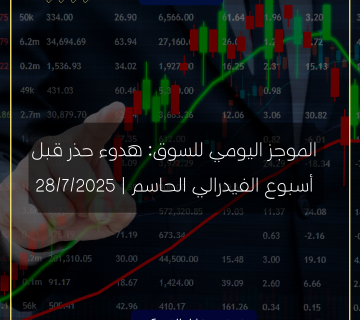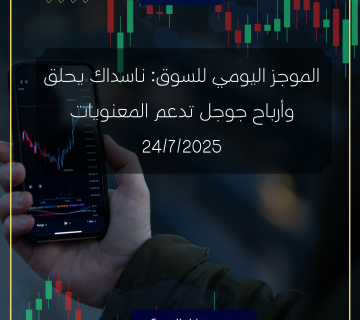Today, July 16, 2025, the global market outlook presents a complex landscape for traders and investors alike. Our expert analysis delves deep into the underlying currents shaping major asset classes, providing you with critical insights to navigate today’s dynamic environment. This comprehensive global market outlook explores the macroeconomic backdrop, pivotal technical levels, and high-impact events slated for the remainder of the week, offering a robust framework for your trading decisions. Understanding the current global market outlook is paramount for identifying both opportunities and risks.
Macroeconomic Landscape: Inflation, Interest Rates, and Growth Concerns
The persistent theme dominating the global market outlook remains the delicate balance between inflation containment and economic growth. Central banks globally, particularly the Federal Reserve and the European Central Bank (ECB), are under immense pressure. Recent inflation data, while showing some signs of moderation in core metrics, continues to exceed long-term targets, fueling expectations of a higher-for-longer interest rate environment. This ongoing monetary policy tightening significantly impacts the overall global market outlook.
In the United States, the latest Consumer Price Index (CPI) report, released earlier this week, indicated a slight easing in headline inflation but sticky core inflation, driven by resilient services sector prices. This has reinforced the market’s view that the Fed may need to maintain its restrictive policy for an extended period, potentially even considering another modest rate hike later in the year if inflation proves more stubborn. This hawkish tilt from the Fed continues to underpin the US Dollar (USD) strength against most major currencies, particularly those whose central banks are perceived to be closer to pausing or easing. Such policy divergences are key drivers in the evolving global market outlook.
Across the Eurozone, the narrative is somewhat mixed. While energy prices have stabilized, wage growth concerns persist, keeping the ECB on high alert. Recent Manufacturing PMIs from Germany and France showed signs of contraction, suggesting industrial weakness, yet the services sector has demonstrated surprising resilience. The market is keenly watching for any explicit signals from ECB President Christine Lagarde regarding future policy trajectory, especially concerning the potential for an earlier pivot compared to the Fed. This uncertainty directly affects the regional global market outlook.
Asia’s economic giants present a divergent picture. China continues to grapple with property sector challenges and subdued consumer demand, necessitating further stimulus measures. The People’s Bank of China (PBOC) is expected to maintain an accommodative stance, potentially injecting more liquidity into the system. Japan, on the other hand, is witnessing a gradual shift away from its ultra-loose monetary policy, with the Bank of Japan (BOJ) slowly normalizing. This divergence in policy direction, coupled with the weakening Yen (JPY) against the stronger dollar, remains a key focus for currency traders within the broader global market outlook.
Technical Analysis: Key Levels and Market Structures for Today’s Global Market Outlook
From a technical perspective, several critical levels are in play across major instruments, signaling potential turning points or continuation patterns that influence the global market outlook.
- DXY (US Dollar Index): The DXY is holding firmly above its 200-day moving average, currently trading around the 105.50-106.00 resistance zone. A decisive break above this level could pave the way for a move towards 107.00, driven by safe-haven demand and interest rate differentials. Support is seen near 105.00, followed by 104.50. Traders should monitor price action around these levels for directional cues, as they are crucial for the immediate global market outlook.
- EUR/USD: This pair remains under pressure, trading below the psychological 1.0800 level. The recent break below 1.0750 suggests further downside potential towards 1.0700 and potentially 1.0650 if the USD strength persists. Resistance is firm at 1.0820, with any rallies likely to be sold into unless a clear bullish catalyst emerges from the Eurozone. Its performance is a significant component of the forex global market outlook.
- GBP/USD: Similar to EUR/USD, Cable is struggling to find significant buying interest. It’s currently hovering near the 1.2600 mark. A sustained break below this level could open the door for a retest of 1.2550 and then 1.2500. Immediate resistance lies at 1.2650, followed by 1.2700. The Bank of England’s (BOE) hawkish rhetoric is providing some support, but global risk aversion favors the dollar, influencing this part of the global market outlook.
- XAU/USD (Gold): Gold prices are attempting to consolidate after recent volatility. The yellow metal is finding some support around the $2300-$2310 an ounce area, which has acted as a crucial pivot point. A break above $2330 could signal a potential move towards $2350, while a sustained break below $2300 might expose $2280. The inverse relationship with real yields and the USD continues to dictate gold’s short-term trajectory, forming a key part of the commodities global market outlook.
- Crude Oil (WTI): Crude oil prices are reacting to supply concerns (geopolitical tensions, OPEC+ output decisions) and demand outlooks (global growth slowdown). WTI futures are trading within a range, with strong resistance at $82.00-$83.00 per barrel and support near $79.00. A break out of this range will likely dictate the next major move. Inventories data later today will be closely watched, shaping the energy global market outlook.
- S&P 500 Index (SPX): After reaching new highs, the S&P 500 is showing signs of consolidation. The 5500-point level is acting as immediate resistance, while support is found around 5450 and 5400. The index’s performance remains highly sensitive to corporate earnings reports and the Federal Reserve’s stance on monetary policy. Any dovish remarks from the Fed could spark a fresh rally, while hawkish surprises could trigger a deeper correction, impacting the equity segment of the global market outlook.
Upcoming High-Impact Events Influencing the Global Market Outlook (Remainder of the Week)
Traders should remain vigilant as several high-impact economic events are slated for the latter half of the week, which will inevitably shape the evolving global market outlook:
- Thursday, July 17: US Housing Starts & Building Permits (potential insight into economic health), Philly Fed Manufacturing Index (regional manufacturing gauge).
- Friday, July 18: Eurozone Consumer Confidence (gauge of consumer spending outlook), UK Retail Sales (key consumption indicator), US Existing Home Sales.
These data releases, coupled with ongoing geopolitical developments in Eastern Europe and the Middle East, will continue to inject volatility into the markets, making constant vigilance crucial for understanding the global market outlook.
Expert Insights and Trading Considerations for the Current Global Market Outlook
Our team believes the current market environment demands agility and careful risk management. While the long-term outlook for major economies remains subject to significant uncertainties, the short to medium term is likely to be characterized by range-bound trading in some assets and clear trends in others driven by interest rate differentials. Our global market outlook emphasizes these points.
- Focus on Fundamentals with Technical Confluence: Always align your technical analysis with the prevailing fundamental narrative. For instance, if the Fed remains hawkish, look for opportunities to trade USD strength on technical pullbacks. This integrated approach is vital for a sound global market outlook.
- Volatility Management: Given the current geopolitical climate and central bank uncertainty, volatility can spike unexpectedly. Ensure your position sizing is appropriate for your risk tolerance.
- Diversification: Consider diversifying your portfolio across different asset classes to mitigate risk, rather than concentrating solely on one or two instruments.
- Stay Informed: Continuously monitor news feeds and economic calendars. Unexpected announcements can trigger rapid price movements.
In conclusion, today’s markets offer a blend of opportunities and risks. A disciplined approach, combined with a deep understanding of both macroeconomic forces and technical levels, will be crucial for navigating the sessions ahead successfully, as guided by this global market outlook.













![Market Insights Today: Key Trends & What to Watch [July 17, 2025]](https://fxadv.com/wp-content/uploads/2025/07/licensed-image-360x320.jpg)
